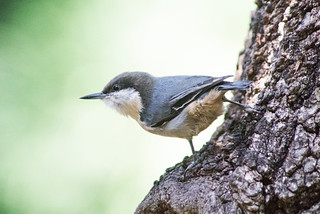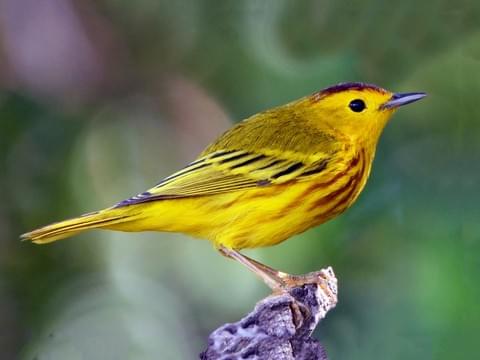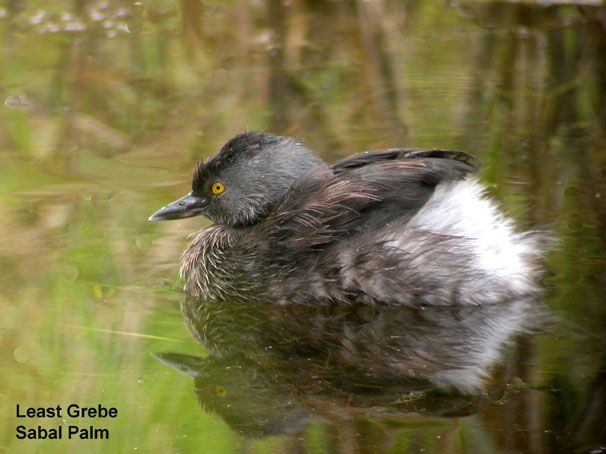Field Trips
Rodeo Lagoon
Point Reyes National Seashore 1 Bear Valley Visitor Center Access Road, Point Reyes Station, CA, United StatesLorem ipsum dolor sit amet, consectetur adipiscing elit, sed do eiusmod tempor incididunt ut labore et dolore magna aliqua. Ut enim ad minim veniam, quis nostrud exercitation ullamco laboris nisi ut aliquip ex ea commodo consequat.
Fall Migration Hotspots
Point Reyes National Seashore 1 Bear Valley Visitor Center Access Road, Point Reyes Station, CA, United StatesNo sleeping in will be possible for those who want to join Derek and Bob on this trip to some of the best-known migrant hotspots in Marin. Our plan for the day will depend on what birds have been seen in the area.
Drakes Beach and the Fish Docks
Rodeo Lagoon Marin Headlands, CA, United StatesLorem ipsum dolor sit amet, consectetur adipiscing elit, sed do eiusmod tempor incididunt ut labore et dolore magna aliqua. Ut enim ad minim veniam, quis nostrud exercitation ullamco laboris nisi ut aliquip ex ea commodo consequat.
Schollenberger Park
Schollenberger Park 1400 Cedar Lane, Petaluma, CA, United StatesHead to Petaluma to explore Shollenberger Park, one of the major hotspots in the North Bay. We'll walk the ~ 3-mile loop leisurely, looking for waterfowl, rails, shorebirds, waders, raptors, sparrows, and other wintering and year-round passerines.
Pacheco Pond
Pacheco Pond 600-748 Bel Marin Keys Blvd, Novato, CA, United StatesWe'll repeat a trip to Pacheco Pond for our first Thursday of the month walk in December. It's hard to compete with Las Gallinas, but Pacheco Pond has provided a reasonable substitute location for our usual Las Gallinas walk. The area provides habitat for a variety of ducks, Black-crowned Night-Heron, Common Gallinule, Sora, and Virginia Rail. The adjacent non-native eucalyptus provides additional habitat for both songbirds, egrets, and a number of raptors including Peregrine Falcon. Thank you, Bob and Sande, for continuing as our competent and friendly guides on this popular monthly walk. We welcome bird enthusiasts of all levels and help each other to find and identify the birds. The area around Pacheco Pond is mostly flat, but we will be walking across some rocky, uneven surfaces. Dress in layers and bring binoculars, scopes, and water. Heavy rain cancels. Directions: Take the Bel Marin Keys Blvd exit from Highway 101. Travel east on Bel Marin Keys Blvd for 2 miles passing through a commercial/industrial section until arriving at a small parking area on the right, which faces the pond. We will meet in the parking area and walk to the trail a short distance up the road.
Bahia, Rush Creek & Rowland Avenue Wetlands
Bahia Wetlands 499-401 Bahia Dr, Novato, United StatesPlease meet at the foot (east end) of Bahia Drive in Novato where Marin Audubon has completed a large restoration project. Shorebirds, ducks, herons, swallows, and rails will be reaping the benefits here for years to come. After viewing the birds and the restoration area, we intend to walk the trail along the edge of the mixed oak woodland. We then plan to drive around to the end of Topaz Street to view the Horseshoe Pond where some diving ducks, including a few Barrow's Goldeneyes, like to winter. During the day we may practice some bird counting to help prepare for the upcoming Christmas Bird Count season. After lunch we will take a look at two nearby areas-Rush Creek and the Rowland Avenue wetlands. Heavy rain cancels. Directions: From Hwy 101 in North Novato, take the Atherton Avenue exit east about 0.9 miles, then turn left onto Bugeia Lane, which becomes Bahia Drive. Follow it to the end where there is street parking. No restrooms available here.
Marta’s Marsh
Marta's Marsh Corte Madera, United StatesMarta's Marsh hosts a wide variety of bird species and provides great viewing opportunities. Typically, shorebirds, ducks, gulls, terns, and some of Marin's only endangered Ridgway's Rails can be seen at this Marin birding hotspot. We will take a short walk alongside San Clemente Creek to the creek mouth where it then enters the bay. Some of our target birds include Blue-winged Teal, Ridgway's Rail, Dunlin, Western and Least Sandpiper, and the possibility of encountering raptors such as Osprey, Peregrine Falcon, and Northern Harrier. We will time our walk to put us at the creek mouth a few hours after low tide, as the incoming tide causes sandpipers, gulls, and ducks to fly from the bay mudflats to the high tide refuge at Marta’s Marsh. As we walk, we will listen for rails as well as any other migrants that we may run into. The fennel patches and grassy areas surrounding the marsh can also be productive for a variety of sparrow and warbler species. At the mouth of the creek we will scope the bay looking for ducks like Lesser and Greater Scaup, Bufflehead, Wigeon, and possibly Canvasback or Redhead. Heavy rain cancels. Bring binoculars and, if you have one, a spotting scope. There are no restroom facilities in the marsh. Directions: From Hwy 101, take Exit 449A at Tamalpais Drive in Corte Madera; go east 0.2 mile toward the bay; turn right at the Home Consignment Store and go 0.4 mile on San Clemente Drive; make the first left onto Harbor Drive for 0.2 mile; turn right onto Yolo Street for 400 feet. Then turn left onto Channel Drive. We will meet where the road dead ends at the marsh.
Beginning Birding at McInnis Park
McInnis Park 310 Smith Ranch Rd, San Rafael, CA, United StatesOnce again, Carol is leading her first trip as a birding field trip leader. (She unfortunately had the flu last month and couldn't complete her official first trip.) She is enrolled at the San Francisco Master Birding Course offered by the California Academy of Sciences, which includes scientific training and at least 100 volunteer hours. Any and all beginning birders are encouraged to join her on this very leisurely stroll around a soccer field at McInnis Park and along the path adjacent to Gallinas Creek. We can expect to see Western Bluebird, Black Phoebe, Say's Phoebe, Chestnut-backed Chickadee, Yellow-rumped Warbler, and more around the soccer field. On our stroll along the creek channel, we hope to see fall migratory waterfowl such as Ring-necked Duck, Northern Pintail, Northern Shoveler, and, of course, our usual residents such as Great and Snowy Egret, Great Blue Heron, and Greater Yellowlegs. We'll also look for sparrows foraging on the ground and raptors soaring overhead. Wear sturdy shoes, dress in layers, and bring water, binoculars, scopes, and your birding enthusiasm! Heavy rain cancels. Directions: We will meet at McInnis Park. From Highway 101, take the Smith Ranch Road exit east toward McInnis Park. We will meet at the first parking lot to the right after you enter McInnis Park. There is plenty of parking available.
Jean and John Starkweather Shoreline Park Bird Walk
Jean and John Starkweather Shoreline Park San Rafael, CAJoin Rich for an easy bird walk on level ground during a high tide. We will bird the shoreline of San Pablo Bay watching for shorebirds on the rocks and diving ducks, loons, and grebes on the bay. We will also look for the Puget Sound variety of White-crowned Sparrow. Bring your scope, water, and snacks. Restrooms are available at the bird walk halfway mark (Target Store). Meet in the parking lot for the Jean and John Starkweather Shoreline trailhead. Heavy rain will cancel. Directions: From the north, take Highway 101 to the Bellam Blvd exit. Turn left on Bellum then right on East Francisco Blvd, which parallels I-580. Head east (toward the Richmond/San Rafael Bridge for about 1-1/2 miles. You will see a Bay Café sign at the Bay Park Center. Turn left on Pelican Way then right to the trailhead parking area. From the south you can take the exit to the San Rafael Bridge getting off at the last Marin exit, the San Quentin exit. For GPS, use the Bay Café address, 2165 Francisco Blvd, San Rafael.
Deer Island Preserve & Simmons Slough
Deer Island Preserve Novato, CALocation: Novato, CA Trip Leader(s): Sande & Bob Chilvers Start Date: Thursday, February 6, 2020 Start Time: 8:30 AM End Time: 12:00 PM Description: Join our "First Thursday walk" walk of the new year in the oak woodland at Deer Island Preserve with views of the surrounding marshland visible from parts of the trail. Red-shouldered Hawks and White-tailed Kites nest here with additional resident and winter raptor sightings possible during our visit. The woodlands are home to woodpeckers, owls, juncos, and towhees, and we'll also watch for egrets and White Pelicans. As usual, birding enthusiasts of all levels are invited to join our group. We always help each other find and identify the birds. We will be walking approximately 1.5 miles on a dirt trail with some gradual up and down slopes. Dress in layers and bring binoculars, scopes, and water. There are no restrooms at this location. Heavy rain cancels. If Marin has received any rain by the date of this field trip, we may stop by Simmons Slough, a diked off tributary of Novato Creek and one of Marin Audubon's properties, to look for wintering waterfowl. This property is part of what Marin Audubon envisions as a Simmons Slough Wildlife Corridor consisting of wetlands and adjacent uplands associated with the watershed. The area is popular with ducks when the seasonal marsh becomes flooded. Directions: From Highway 101 in Novato, take the exit for Atherton Avenue east 1.7 miles. Turn right onto Olive Ave and left onto Deer Island Lane. The gate is on your right with a nearby dirt parking lot.
San Joaquin River National Wildlife Refuge
San Joaquin River National Wildlife Refuge 2714 Dairy Rd, Vernalis, CARuthie Rudesill of Redwood Regional Ornithological Society fame will lead this trip as a follow up to her presentation at our Speaker Series on January 9 entitled "Little Known Great Birding Locations in Northern California." The San Joaquin River NWR is situated where three major rivers (Tuolumne, Stanislaus, and San Joaquin) join in the San Joaquin Valley, creating a mix of habitats that provide ideal conditions for high wildlife and plant diversity. The refuge was initially established primarily to protect and manage habitat for the Aleutian Cackling Goose but now provides important nesting habitat for Swainson's Hawks, herons, cormorants, as well as the endangered least Bell's Vireo, which was absent from the area for five decades. The refuge is also home to the largest wild population of Riparian Brush Rabbits in the world that approached extinction in the 1990's. Bring optics (scopes would be useful), lunch, and dress in layers. There is a restroom at the refuge headquarters. No fees are collected here. Heavy rain cancels. This field trip is co-sponsored by RROS and Marin Audubon. Sonoma County folks who wish to carpool can meet at the Petaluma Park N' Ride at the junction of Highways 101 and 116 at 7:15 AM. These Sonoma participants will meet up with Marinites who wish to join a carpool at the Smith Ranch Road and Highway 101 Park N' Ride at 7:35 AM. For more information about this trip, contact Ruthie at (707) 833-6026 or (707) 481-0768. Directions: From Highway 580 southbound after Altamont Pass, take the Maze Blvd Exit onto Highway 132 (east towards Modesto). The NWR is at the San Joaquin River. Turn left on North Gates Road from Highway 132. Travel northbound on Gates Road for approximately 3 miles. Turn left on Beckwith Road. Travel westbound on Beckwith Road for 2 miles to the refuge parking lot on the left side of the road. Our first stop will be at the Migratory Bird Viewing Platform on Beckwith Road. Later we will return to Highway 132 and travel to the refuge headquarters at 2714 Dairy Road, Vernalis.



